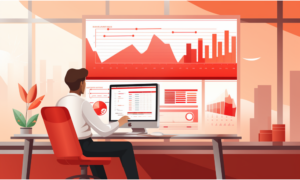HR strategy 2020: Be prepared to be unprepared
- 5 Min Read
As the world prepares to return to work, one thing must be acknowledged by HR and business leaders: nothing is set in stone. In devising a new HR strategy, organizations must expect the unexpected and ensure that they remain agile. HRD Thought Leader Chuck Heaton explores this further, outlining how leaders can navigate this chapter.
- Author: Chuck Heaton
- Date published: Jul 8, 2020
- Categories

As we pass the half way mark in 2020, HR needs to accept that as a global community, we are officially now experiencing the enigmatic ‘new normal’. This new era for will require an effective HR strategy in the short term, whilst still keeping a keen an eye on company values and vision.
HR must be prepared to be unprepared for what the next 6 months will bring to our organizations. In our current economic and social climate, uncertainty will continue to be the norm. So, how can HR help their organizations demonstrate more agility and adaptability for the road ahead? Embrace and incorporate the following steps:
Step one: embracing agility in your actions
HR professionals must influence their organizations to act more quickly and clearly in the coming months. As we see a rise in COVID-19 cases, more and more companies are seeing cases among their own workforces. HR must assist the organization in adapting to these changing conditions. Now is the time for HR to facilitate a quick review of how their organization has handled the last 4 months by asking the following questions:
- What are the overall lessons learned?
- How do you integrate your ERT (Emergency Response Team) actions into the regular organizational rhythm? For example, should your organization establish a full-time role to manage pandemic responses?
- Who are the managers that have handled the remote working aspect well and kept their teams engaged? What lessons can you share from their experiences with the rest of the organization?
- What changes do you need to make in your response regarding policies, procedures, and communications? For example, should you have a standard sick leave policy that encourages employees to stay at home if they are symptomatic or have been exposed to a person with a positive COVID-19 test?
Once you have answered these questions, quickly incorporate the identified changes in your overall pandemic work strategy. Keep these reviews going on a regular basis to ensure the HR strategy remains agile.
Step two: embracing authenticity in your communications
We have seen organizations over the last several months rush to communicate in response to the medical, social and economic conditions we have experienced since the beginning of March. There have been several examples of these communications not being authentic as they relate to the reality of their organization’s current environment.
As a result, we have seen these communications damage the credibility of the management team. HR can help the management team improve the authenticity of their communications by asking these three questions regularly:
- Do these communications address the issues at hand?
- Are they directed at the target audience? (employees, customers or community)
- Are the communicated plans supported by the organization’s leadership?
If the answer to all three of these questions are yes, then you are on the right path to authentic communication. If not, then you need to revisit each communication and revise accordingly.
Step three: embracing flexibility in the organization
Key areas where HR strategy can help organizations embrace flexibility are:
1. Settle the remote working vs. returning to work debate
- Fully identify all the jobs that can continue remotely for the rest of the year
- Decide if you are going to give employees the option to return to the office or stay remote
- As a contingency, develop a hybrid or staggered schedule for employees to return to the office (such as every other week by department) to facilitate social distancing guidelines
2. Goals & objective
- Ensure the organization has changed its G&O’s to adapt to the new normal
- Structure the G&O’s to be more short-term; set either monthly or quarterly for the rest of 2020
3. Performance management
- Seize the opportunity to change your current yearly method of performance management to embrace a more immediate, short-term review feedback cycle
- Develop a contingency performance management schedule for Q4 2020 going into Q1 2021 to anticipate continued disruption factors
4. Organizational structure
- Decide what permanent changes need to be made in your organization structure to add flexibility for changing climate
- Evaluate other organizational design opportunities to streamline management, increase efficiency or facilitate remote work
Step four: instilling resilience in your employees
The COVID-19 sprint in March has become a marathon in July. HR leaders have a challenge in building a foundation of resilience among their employees for the rest of 2020. Here are some ways to build that foundation:
- Develop a Mental Health strategy: incorporate this HR Playbook for mental health
- Encourage employees to take a break: Summer is typically when many employees take their vacations, so encourage a welcome break from the rigors of the new normal to avoid burnout.
- Employee engagement: encourage managers to continue engaging with their employees by balancing performance expectations, conducting mental health check-ins and asking for feedback.
- Establish flexible boundaries: work life and personal life have never been more blended than they are now. Look for ways HR can help managers and employees establish flexible boundaries to ensure work is not a 24/7 commitment.
During this disruptive time, it’s important for HR to adapt to the new normal and be prepared to be unprepared. Keep in mind that even if you have not embraced these strategies at the pandemic’s onset, it’s not too late to steer yourself back onto the right path. HR can help everyone successfully navigate the rest of 2020.









